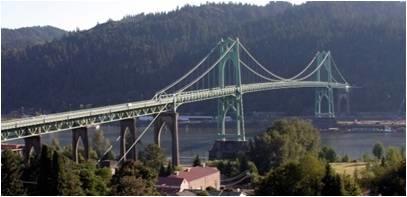Measurement Science Need for Advancing Infrastructure Delivery Workshop
May 19-20, 2010
National Institute of Standards and Technology, Gaithersburg, MD USA
Objective: Identify measurement science needed to achieve significant improvements in advancing delivery of sustainable physical infrastructure [1] and have spill over benefits to other construction sectors.This includes the following:
- Performance metrics, measurement methods, predictive tools, test cases, and reference data
- Evaluation and assessment of technologies, systems, and practices
- Comparison studies to determine uncertainties associated with current practice
- Technical guidelines that form the basis for standards, codes, and practices
The United States depends on a robust physical infrastructure to provide a high quality of life for its citizens and to advance our nation's competitiveness in the global economy. Much of this vast physical infrastructure is nearing the end of its service life and needs to be repaired or replaced. The projected cost of renewing existing, critical physical infrastructure is $2.2 T. Expected growth in the U.S. will require significant expansion of our existing physical infrastructure as well.

Breakout Groups Participants will divide into Breakout Groups for different infrastructure sectors described below. Each group will focus on the measurement and technical challenges related to:
- work process improvements and enabling technologies
- productivity measurement
- Interoperability and lifecycle information management
- prefabrication, preassembly and modularization
- automated construction processes
- quality assurance and conformance to design basis
- advanced planning tools and streamlined permitting and licensing
- predictive performance models, smart sensors and other tools for sustainable operations and maintenance
Bridges
The average age of the nation's bridge infrastructure is about 43 years. While bridges are generally designed to be structurally sound for 50 years, many are now approaching that age. As of December 2008, about 12% of our nation's bridges were structurally deficient, and 15% functionally obsolete. Maintaining the bridge infrastructure and keeping deficiencies steady will require an estimated $13 billion annually. There is the opportunity for improved design, materials, construction, and maintenance technologies to reduce both the cost of O&M and increase the speed, quality, and longevity of renovations and new bridge construction.
Power Generation
The nation's electric power infrastructure consists of generation capacity, as well as transmission and distribution lines, substations, and other installations. There is an estimated $29.5 billion shortfall in investments in the energy infrastructure over the next five years. There are a number of opportunities to improve all phases of infrastructure delivery for this sector, both in upgrading and modernization of assets and construction of new capacity.
Water and Wastewater Systems
The water infrastructure of the United States consists of its reservoirs, dams, treatment plants, water mains, sewer lines, and wastewater facilities. The predicted investment shortfall for water and wastewater infrastructure is $108.6 billion over the next five years. The major renovation, modernization, and new construction projects required to improve the water infrastructure represent many opportunities for advanced delivery methods to have a substantial impact.
[1] Physical infrastructure includes airports, bridges, tunnels, roads, ports, and other fixed portions of transportation systems, power generation and distribution facilities, water and waste facilities, government buildings, and public arenas.

